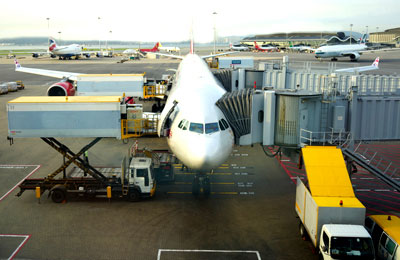
ME carriers post 9.9pc cargo growth in Sept
Geneva, October 30, 2013
Middle East carriers saw a robust 9.9 per cent growth in cargo in September, but this is slightly below the average performance of 12.3 per cent so far this year, a report said, noting that the underlying trends for the region are strong.
Improving conditions in advanced economies should boost trade through the Gulf hubs, and trade volumes in the Middle East have shown solid momentum in recent months, added the latest report from the International Air Transport Association (Iata) showing cargo growth stabilizing in September following recent months of slow but steady growth.
African carriers’ Freight Tonne Kilometers (FTK) FTKs fell 0.8 per cent in September compared to a year ago, although for the year as a whole they are still in positive territory (1.1 per cent).
This is in line with recent performance: African freight growth has tailed off after a strong start to the year. Capacity rose by 11.2 per cent, the second fastest of any region, which pushed their load factor down to just 26.3 per cent, almost 20 percentage points lower than the global average (45.1 per cent), Iata said.
Globally, FTK grew by 0.5 per cent year-on-year. While this is slower that the 3.4 per cent growth recorded for August, overall air cargo volumes are at a 25-month high, and steady increases in the size of the market since April have been supported by improvements in business conditions.
The slow-but-steady global growth picture is colored by significant regional variation. Asia-Pacific airlines experienced a 3.1 per cent fall in cargo activity compared to last September.
“The story behind September’s performance is regional. The leveling-off of global volumes was a result of the growth rate in Europe and the Middle East moderating after recent acceleration, while Asia-Pacific airlines saw a deepening of the market weakness,” said Tony Tyler, Iata’s director general and CEO.
“At a global level, the September results are aligned with our expectations for an improvement towards the end of the year. All indicators still point to strengthening business confidence as we approach the final quarter. That’s cause for cautious optimism. But the persistent cargo weakness when compared to the strength of passenger markets is a signal for the industry to work at improving its value proposition with programs such as e-freight,” Tyler said.
Asia-Pacific carriers continue to see weakness in air freight demand. FTKs fell 3.1 per cent in September compared to a year ago, deepening the contraction so far this year to 2.1 per cent.
European carriers grew 1.4 per cent in September year-on-year, down on August’s robust 3.4 per cent rise. Benefiting from the improvement in the European economy, airlines in the region have carried about 30 per cent of the rise in global volumes since the second quarter, and FTKs are now the highest they have been since mid-2011.
North American airlines grew just 0.9 per cent in September compared to a year ago, but this does buck the declining trend seen so far this year (-1.1 per cent), the report said.
Going forward, US prospects are uncertain; while business confidence started to improve in Q3, it remains below the average seen at the start of the year, and the impact of the US government shutdown in October is not yet clear. – TradeArabia News Service







